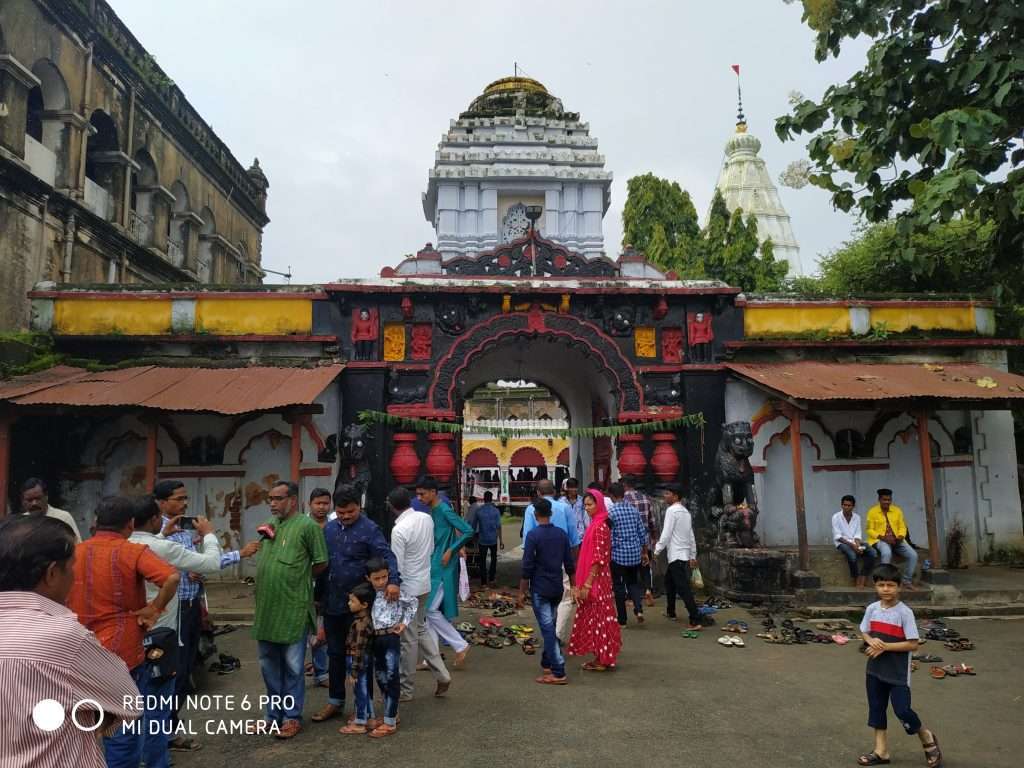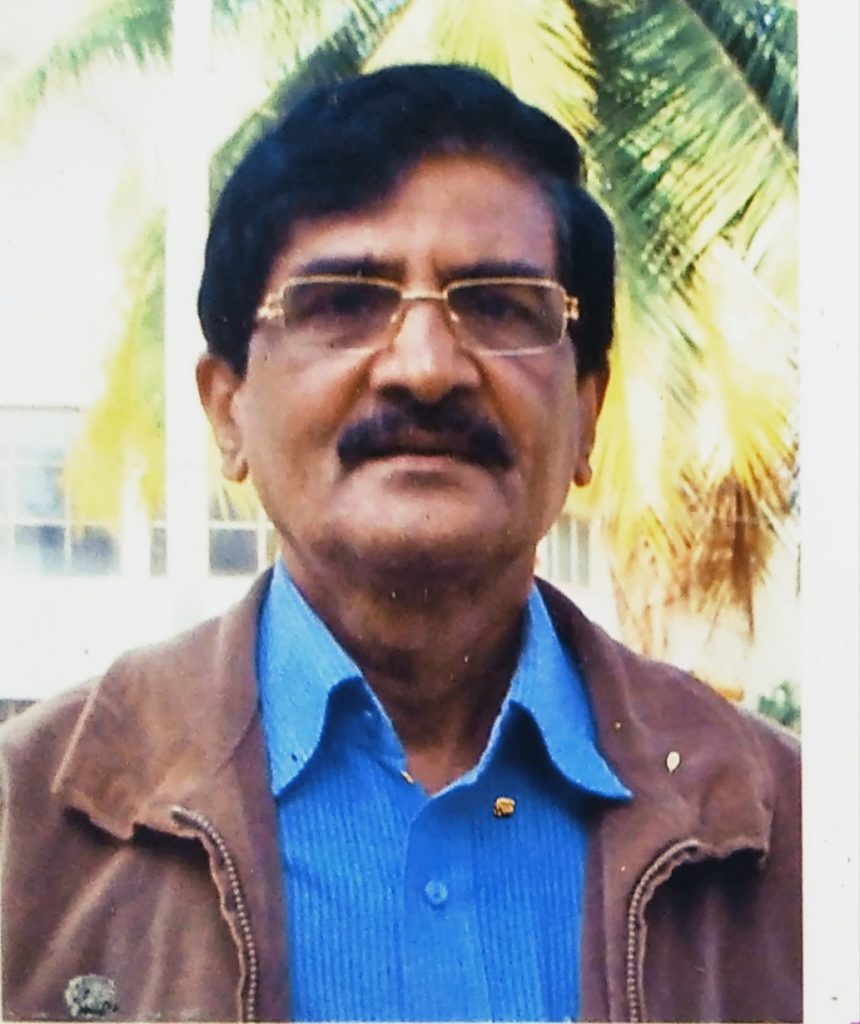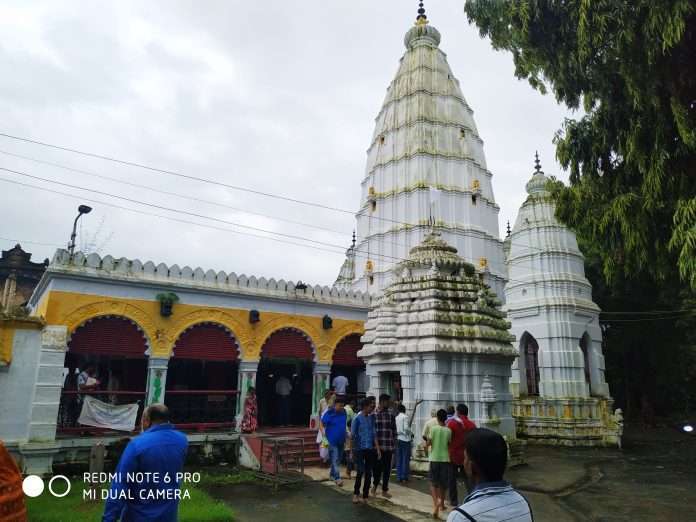Tel and Indravati basin covering Kalahandi and its neighbourhood is land of Shakti worship since time immemorial. The earliest form of Shakti worship was discovered in the shape of Stambeswari which has been mentioned in the Teresingha Copper plate of Raja Tustikar during 4th century AD.
It is the practice of nature and mother deity’s worshippers Tribal Kondhs to worship wooden posts which have taken the shape of Stambeswari in the process of cultural assimilation, it is believed. Deity Manikeswari can be taken as one of the examples of cultural assimilation between tribal and Sakta Tantric systems of worship.
Deity Manikeswari is the tutelary goddess of Kalahandi. The name of the deity is significant as it is believed that the name of the deity is derived from the word Manikya (Ruby). Kalahandi region is famous for availability of different types of precious and semi-precious gemstones including that of Ruby, Sapphire, Emerald, Topaz, Iolite, Cat’s eye, zircon etc.
Incidentally, the Kalahandi region was known as ‘Karund’ and the Naga kings were known as Karundadhipati. The word Karund is believed to have been derived from the Sanskrit word Kurundam which is the base of the group of gemstones Ruby, Sapphire, and Emerald.
The Chindak Naga kings of 12th century AD were worshippers of Goddess Manikya Devi which is known from Jatanpal, Dantewara and Bhairamgarh inscriptions. The inscription of King Someswar Dev of Chindaknaga dynasty in the NagavansiPrasasti describes Manikya Devi as his Ista Devi. Later the deity was adopted by Gangas and subsequently as the tutelary deity of Naga kings in Kalahandi with a new name ‘Manikeswari’.
The medieval period between 10th to 12 th century was a period of political disturbance in Trikalinga and South Kosala region due to continuing warfare between Kalachuri, Soma, Ganga and Chindaknaga and the present Kalahandi region virtually turned into a marching route of army and witnessed many battles.
Availability of large numbers of Sati stones and Hero stones from different parts of the district is indication of long warfare. There was competition to occupy this region to adorn the Trikaligadhipati title. During this period ChindakaNagas of Chakrakot who were friends of Gangas were attacked by the Kalachuries and their capital city Chakrakotnagar was destroyed.
Kalachuri king Ratna Deva-II of Ratanpur also defeated Jateswar alias Kamarnava, the son of the Ganga King Chodaganga Deva. The lost glory was at last recovered only by AniankaBhima Deva alias Anangbhima Deva, defeating Kalchuri ruler Pratapmalla.
The tradition says that the Gangas adopted Manikyadevi the tutelary deity of their friend Chindaknagas after recovering the territory of Chindaknagas from Kalachuries. During this period this region turned into a vassal state of Gangas where Ganga governors were posted. However with the Ganga central power was weakened, as alternative Nagas in the Kalahandi region and Chauhans in the Bolangir region ushered power.
The Darbar Records of Naga rulers and Kalahandi district gazetteers say that the 6th ruler of Naga dynasty Harischandra Deo died amidst internal disturbances and his widow queen along with her minor son Ramachandra Deo took shelter in her maternal home at Gadapur belonging to Ganga family. The present name of Gadapur is Gudari located in the boarder of Ganjam and Kondhmal district in Daringbari block.
Later to save the region from anarchy the Kondh Umrahs and important citizens brought back the queen and heir apparent Ramachandra Deo to Kalahandi. The legend says that while returning to Kalahandi, Ramachandra Deo brought Manikya Devi from his maternal uncle’s home. Manikya Devi was established at Jugsaipatna and the coronation of the new king was held there.
To create confidence the Kondh chief offered his daughter to the king and the marriage ceremony was held there. Kondh chiefs of different lineages played important roles to appease the king. In this aspect Kondh songs say “Kuledhara Badaka, Patbandha Tudaka, Jakdhara Jakaska, Karri dhara Karalka, Jhidia Sermelka.”
Its meaning in English is the Badaka Kondh chief carried the king in his lap, Tudaka chief tied turban, Jakaska chief held the dressing box, Karuka chief held weapons for protection and Shermelka chief offered his daughter.
Later to control the kingdom the king left Jugsaipatna. He installed Manikya Devi with a new name Manikeswari at Bhandesirgarh (present Bhawanipatna) and ruled from old capital Jenabalipatna which is the present Junagarh.

However, during the rule of the 27th king of the Naga dynasty Fatenarayan Deo, there was an epidemic in the capital and there were large numbers of deaths including the 2nd son of the king and the eldest son UditPratapDeo was in serious condition.
Udit Pratap Deo was believed to have been cured after prayer by the king before the abode of Manikeswari and in the year 1849, the king shifted his capital to Bunadesir patina i.e. present Bhawanipatna. Construction of the temple of the deity was started by Fatenarayan Deo and it took final shape in 1935 during the reign of the king Braja Mohan Deo.
The present temple is located adjacent to the palace, which is 56 feet tall and in the form of Rekhadeaula. It consists of a massive Mandap and sanctum. The pillar Mandap is linked with the main temple and once it was decorated with mural paintings of Dasamahavidya and natural sceneries of Kalahandi, which is at present not seen due to destruction by visiting people.
The Mandapa is having columns of six rows and six columns in each row. The temple of Budharaja has been installed as an important Parswa Devata and guardian deity by the side of the northern entrance of the temple.
There are three other small Rekha temples dedicated to Vaishnavi in the North of the main temple, Narasinghi on the west side, and Varahi in the south. Combinedly, the temple complex has a gigantic look.
Interestingly, Manikeswari though iconographically having a conception of Chinnamasta, is worshipped in the Ekakhyari mantra of Kali.
Apart from Bhawanipatna, Manikeswari is also worshipped in Paralakhemundi, Gadapur, Sanakhemundi, Sonepur, Kashipur, Thuamul Rampur, Karlapat, Jugsaipatna and M. Rampur.
(The views expressed are the writer’s own)

Uma Shankar Kar, A senior Journalist, and scholar.
Bhawanipatna , Kalahandi
You can reach him at [email protected]

